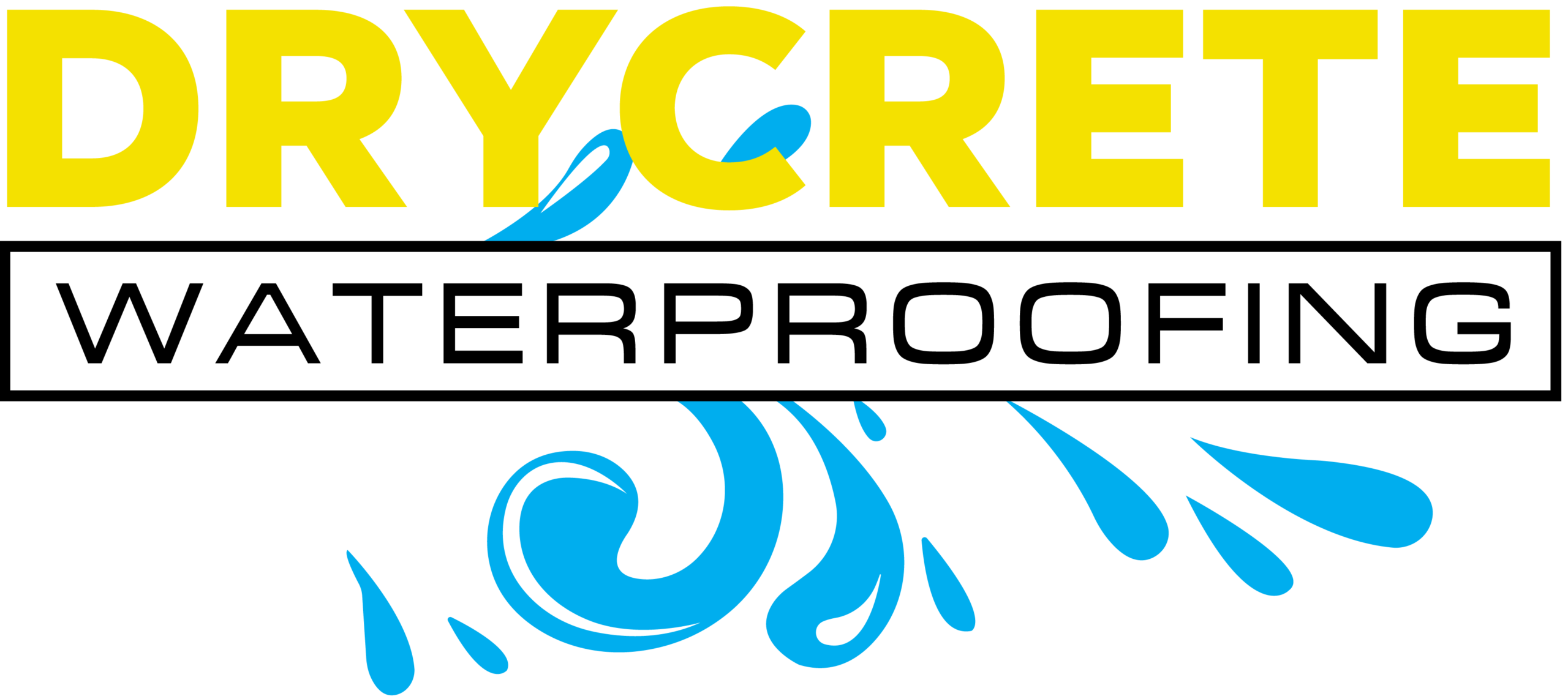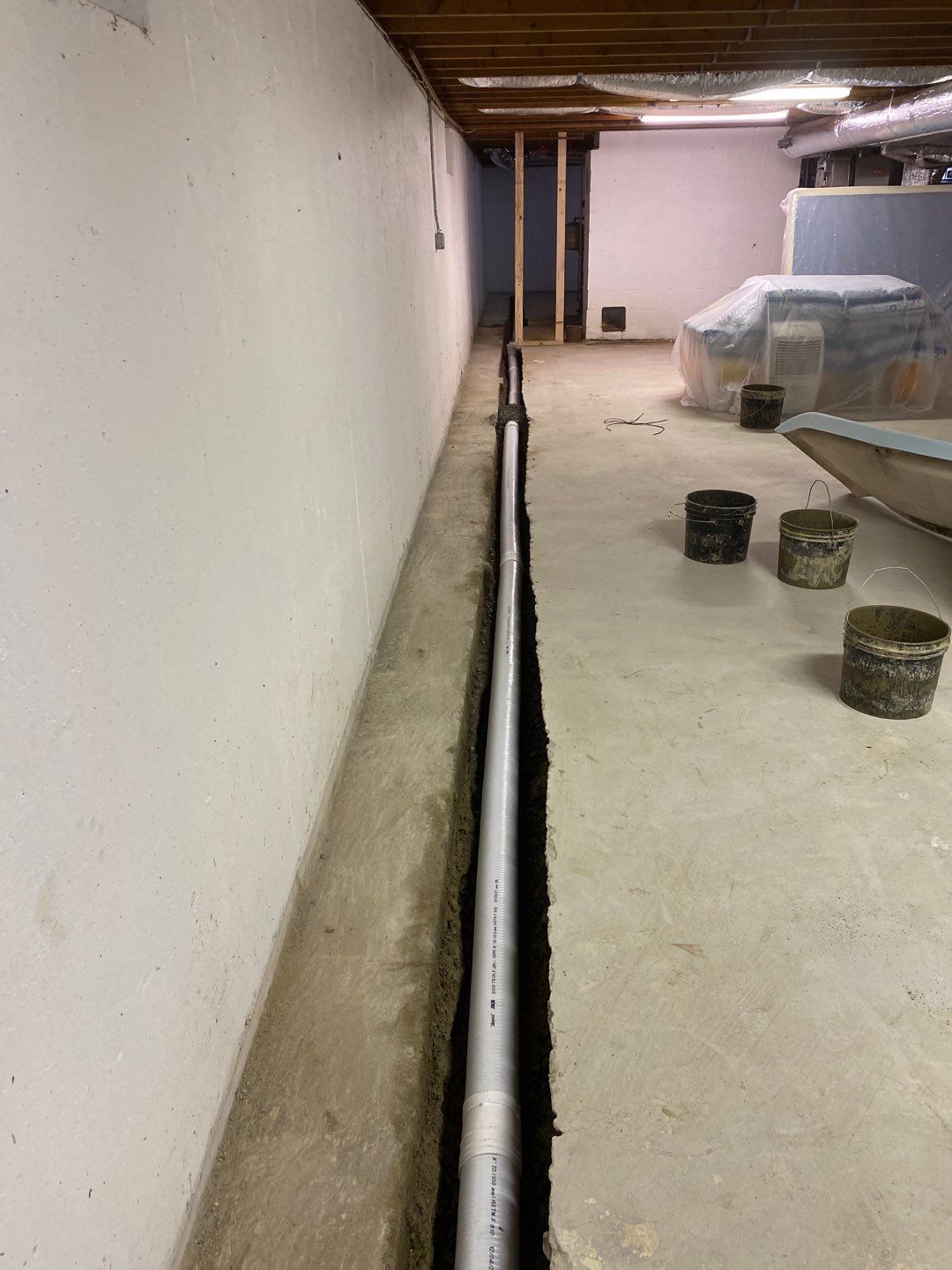When you hear the phrase “drain tile” you’re probably picturing those little metal or plastic grates in the floor. Those are actually called floor drains (despite basically being tiles, we know, confusing). A drainage tile is actually another word for a French Drain.
What Is Drainage Tile?
Drainage tile goes by a few names; French drain, perimeter drain and others. There are nuances between them but to all intents and purposes, they’re the same thing doing the same job. That job is conducting groundwater and runoff safely away from your home.
Whatever you choose to call them, drainage tiles consist of a perforated plastic tube which sits embedded in crushed stone just below floor level. This allows water to enter into the drain where it can be harmlessly conducted away before it threatens your basement.
How Does Drainage Tile Work?
A drain tile system works on a very simple principle: water follows the path of least resistance. Like guttering and downspouts, they serve to provide an easy path from a potential problem area to a safer one.
Drain tile installation is a fairly straightforward process:
- A trench is dug around the interior perimeter of your foundation
- A perforated drain pipe (we use triple walled PVC for durability) is laid in the trench
- This is then backfilled with crushed stone, providing a filter for debris and holding the pipe in place
- The whole construction is then covered over again and your basement can be finished as normal.
The idea is that the groundwater contained in the soil under your home will find its way through the perforations and into the pipe. From there it gets redirected away rather than pushing up through your basement. Often, they’ll run from your basement to your sump pump or a storm drain. Anywhere the water can go without damaging your home.
Types of Drainage Tile Systems
There are two varieties of tile drains, defined by where they’re installed. Unsurprisingly they’re called ‘interior’ and ‘exterior’ tile drains (or French drains). No matter where they’re installed, they provide an easy path for any unwanted water to flow safely away, but each location has its own particular uses.
Exterior Drainage Tile Systems
An exterior drain tile is installed, as the name may suggest, outside the foundation of your home alongside your footing. They aim to stop groundwater from finding a way in through your basement walls and floor, alleviating the hydrostatic pressure exerted on them.
Interior Drainage Tile Systems
When installed within the walls of your basement, a drain tile is referred to as an ‘interior’ system. It’ll still be below floor level but inside the walls. The purpose here is to reduce the pressure on your slab from groundwater rising up from below.
They can be coupled with cove diverters to help deal with water intrusion and condensation from walls and vapor barriers too.
Benefits of Using Drainage Tile
Drain tiles are a fantastic tool in any waterproofer’s arsenal. They’re relatively cost-effective, incredibly durable and quite frankly- they work. In particular they’re great for:
Preventing Flooding
When the rain falls, it has to go somewhere. Under normal circumstances, the soil around your home will absorb most of it until it drains harmlessly away. Sometimes, that soil can’t absorb anymore and the water table rises (known as a ‘false water table’). This is particularly dangerous for an unprotected basement. It’s not uncommon for water to push up through your basement floor when this happens.
By installing a drainage tile system, this risk is vastly reduced. As the pipe offers an easier path for the groundwater than your basement slab floor or walls, the hydrostatic pressure is reduced, keeping water out.
Not only does this avoid puddles forming on your floors, it keeps the risk of structural damage to a minimum. Water can be an incredibly destructive force when it gets where it shouldn’t, so installing systems to manage it is always a good idea.
Reduction In Moisture
Basements are often pretty humid spaces. Not only do they contend with generally pretty poor ventilation, trapping humidity from the air but hydrostatic pressure from the groundwater in the surrounding soil can cause seepage too. This damp environment is the perfect breeding ground for molds and mildews.
Drain tiles can help here too. By offering a controlled path that leads away from your floors and walls, they can put a stop to moisture seeping in. Partner your drain tiles with cove diverters and they can also help remove condensation from humid environments too, helping keep your home mold and spore free.
Increasing Home Value
Another key bonus that homeowners receive from installing drain tile systems is significant boosts to the value of your home. When compared to homes suffering signs of water intrusion, properly waterproofed homes command significantly higher sums on the open market. Some studies have even suggested that this might be as much as a 25% uplift in final prices.
Buyers are willing to pay a premium on homes which don’t require remedial work. Ensuring that the waterproofing is dealt with, via things like drain tiles, is an important step. Not only is it one less thing for them to worry about, it also gives the chance to turn a basement into a selling point. Rather than a dark, dank space, it becomes an extra liveable room and a key selling point.
Common Problems and Maintenance
While they’re pretty simple and straightforward, drainage tiles are prone to certain issues.
Firstly, if the wrong materials are used during installation the weight of crushed stone and basement floor above them can cause them to collapse. Unfortunately, the only remedy here is replacement which will involve excavating a trench.
Even if they are properly installed, drainage tiles can become clogged with sediment. The crushed stones and gravel that they’re embedded in will filter out some of this but, given that they sit below ground level, it’s always a losing battle eventually. They can be cleared using a high-pressure jet washer or even by hand or hydro-vac if you can reach the obstruction.
Regular inspections, especially around the rainiest months, will let you know if anything needs doing. It’s worth scheduling an annual check-up to ensure that your system is flowing exactly as it should, but you can keep an eye on it yourself between times.
DIY Vs Professional Installation
While there’s nothing stopping you from attempting to install a drain tile system yourself, it’s a big project for a DIYer. While on the surface it’s simply a matter of digging a trench, laying the pipe and covering it over again, there are nuances. From carefully considering each angle and depth to selecting the best materials for the job, simple doesn’t always mean straightforward.
Any work around your foundations is potentially hazardous- they support the rest of your home. Professionals have the knowledge and, vitally, experience to handle the unexpected things that may pop up.
There are also risks in the installation. An improperly placed drain or poor connection could end up exacerbating the problem rather than fixing it. In cases like this, rather than offering a harmless path for the water, you can end up with it collecting under your floor. Even placing a pipe at slightly too great or too shallow an angle could reduce efficiency, making it a wasted effort.
When calling in a professional basement waterproofing company, you have some guarantee of good workmanship. Check out reviews online, talk to neighbors and friends and choose who you work with carefully. This is a major investment and avoiding water intrusion should be at the forefront of every owner’s mind.
It’s worth calling in the pros if you can.
In Conclusion:
If you’re facing water rising from below after heavy rain or even just a generally dank basement, installing a drainage tile system could be the answer. Whether you’re looking to fight off mold and mildew in your storage space or even thinking about installing a home gym or cinema, starting from the bottom and working up is a great idea.
While they might be simple, there’s no denying the effectiveness of a drainage tile system in keeping a space nice and dry.

